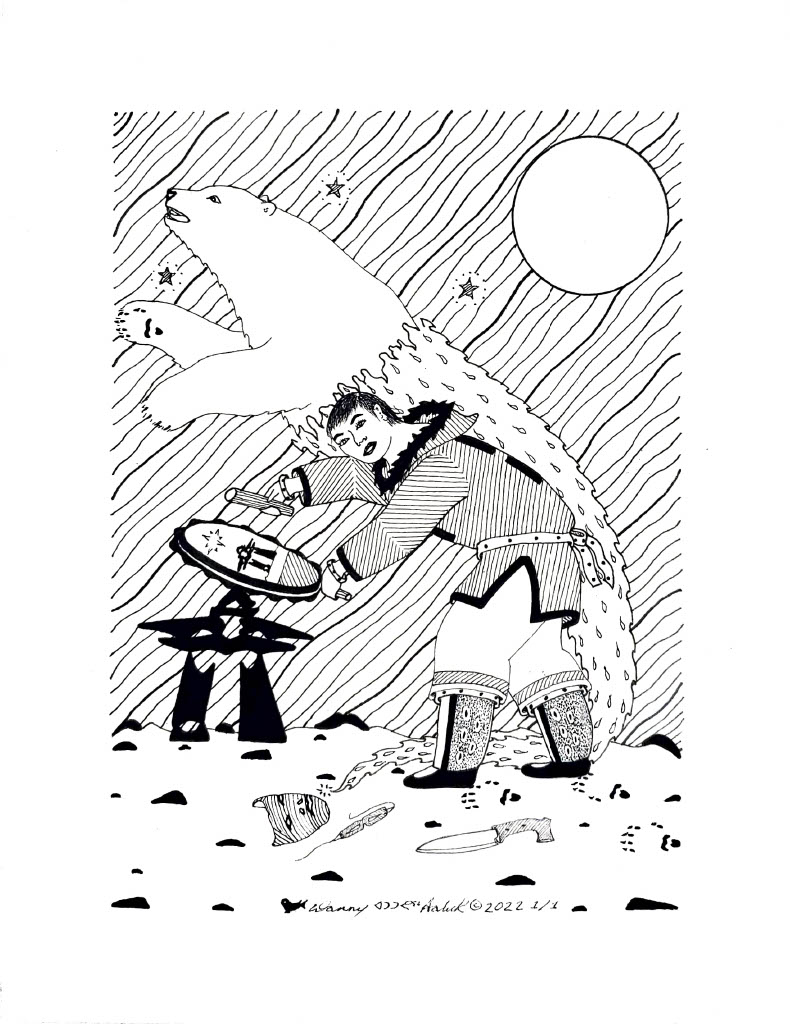Aesthetic Action: Difference between revisions
No edit summary |
|||
| Line 1: | Line 1: | ||
change quote | change quote | ||
Welcome | Welcome to the in-between. | ||
[[File:1737039042167-3934f768-a251-4572-acf4-33d2c96518b9 1.jpg|thumb]] | [[File:1737039042167-3934f768-a251-4572-acf4-33d2c96518b9 1.jpg|thumb]] | ||
Revision as of 23:08, 29 January 2025
change quote
Welcome to the in-between.

Aesthetics
First, before you start following this cut, a note on "aesthetics":
Robinson and Martin understand aesthetics as the material and sensuous encounters between bodies-in-action, and the affective forces created in such encounters. What makes "aesthetic action” different from any other action, according to them, is the intentionality of either the action itself or the artist, or the aesthetic experience of the participating actor [1].
- ↑ Robinson, D., & Martin, K. (Eds.). (2016). Arts of engagement: Taking aesthetic action in and beyond the Truth and Reconciliation Commission of Canada. Wilfrid Laurier Univ. Press.
Aesthetic Encounter as Knowledge Conciliation
This cut reconfigures the challenge of knowledge co-production in the context of polar bear monitoring research in Nunavut as one that may come to matter through aesthetic encounters.
You are invited to think alongside the spaces that have emerged from prospective aesthetic actions like co-creating a motion-graphic documentary, built an igloo-, spent time on the land-, sharing food, and artistic interventions. Together we may feel our way forward through this knowledge-land-scape to understand how such encounters between research partners from Queen’s University and the community of Gjoa Haven, Nunavut have come to matter, and how they may provide meaning in terms of knowledge conciliation.
(Re-)Configurating Space
The questions I have asked myself alongside the unfolding of some of the events in this knowledge-land-scape are: What kind of spaces open up? What insights emerge within such spaces? What possibilities for cross-cultural exchange, beyond data, become possible? What slippages do they reveal between the promises of ethical knowledge engagement, and the material practices of doing so? And what can we learn from such slippages?
Aesthetic Action and the ESE
Aesthetics as a concept that is associated with western arts philosophy, but understood here as the affective and sensuous, provides multiple ways to engage and and think with the principles of in-between space, as put forward by Willie Ermine.
The artistic qualities of aesthetic actions can provide tools outside of traditional western-scientific paradigms, to facilitate ways of viewing, conducting and presenting research outside of dualistic thinking: the hallmark of classic western philosophy. As such aesthetic action can actively deconstruct, challenge and decenter the dominance of western ways of knowing and establish other sites of ‘enunciation’ - rather than merely critiquing- and re-centering them in the process (Bhabha, 2012; Simpson, 2004; Bhambra, 2014).
Irwin, and Kind (2005) propose an understanding of arts-based research as ‘enacted living inquiry’. They describe such living inquiry as an aesthetic encounter, constituted through visual and textual understandings and experiences rather than mere visual and textual representations. Such inquiry blurs hard divisions of practice and theory and explores in-betweenness in ways that resonate with Barad’s intra-action and Ermine’s ethical space: ‘They [arts-based inquiries] create openings, they displace meaning, and they allow for slippages. Loss, shift, and rupture create presence through absence, they become tactile, felt, and seen’ (Springgay, Irwin, and Kind, 2005).
In its rejection of certainty, the in-between opens up. Irwin’s (2013) description of this in-between, and the conditions it provides for ‘becoming’, resonated both with Ermine’s description of the ‘ethical space’, and Karen Barad’s intra-dependency in multiple ways. Irwin discusses ‘becoming’ as something that is placed between two multiplicities, not by becoming the other, but by ‘becoming-other’ (Irwin, 2013).
Aesthetic (in)action in BearWatch
You find yourself at a crossroad. Each of the paths forward will guide you across a case-study on aesthetic action in the BearWatch project.
Detour to Cut 2: Community-based Filmmaking
